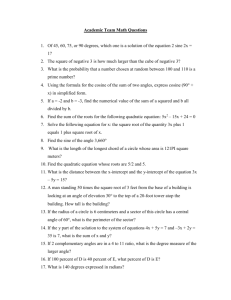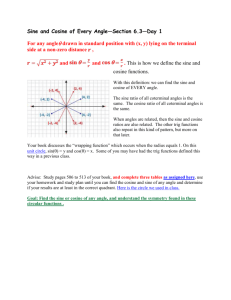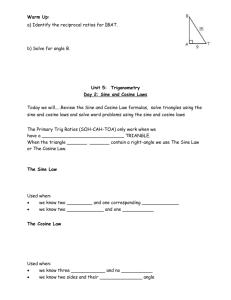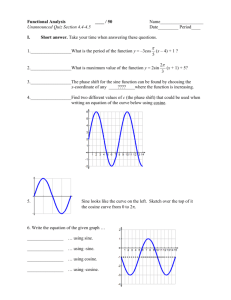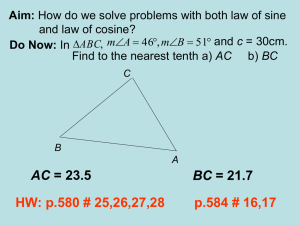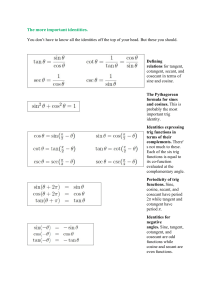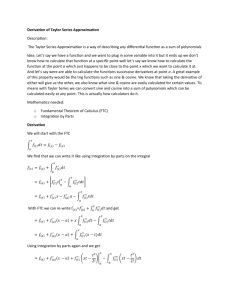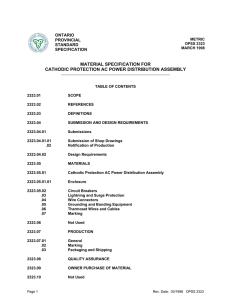File
advertisement
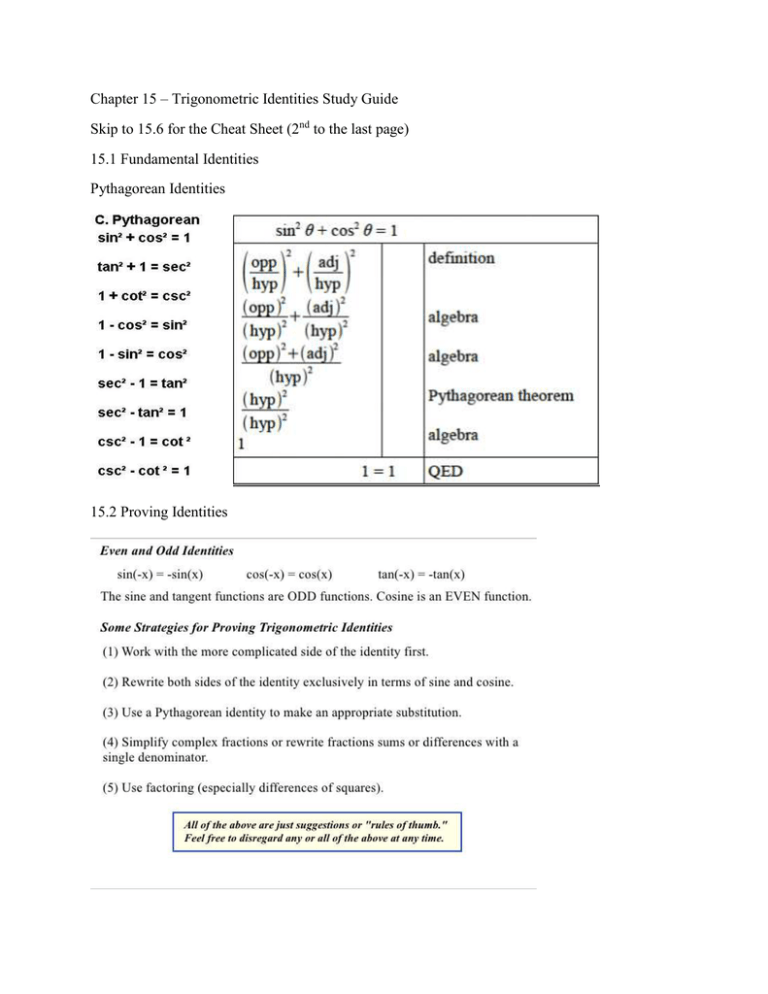
Chapter 15 – Trigonometric Identities Study Guide Skip to 15.6 for the Cheat Sheet (2nd to the last page) 15.1 Fundamental Identities Pythagorean Identities 15.2 Proving Identities 15.3 The Cosine of a Sum or a Difference & 15.4 The Sine and Tangent of a Sum or a Difference A function is even if it’s symmetrical along the y-axis cos(-x) = cos x and sec (-x) = sec x are even functions Reduction Formulas (ONLY FOR FUNZIES and Space Filler) 15.5 Double-Angle and Half-Angle Formulas 15.7 The Law of Cosine 15.8 Law of Sine Use the law of sine when: 1) The measures of two angles and the length of any one side are provided. 2) The lengths of two sides and the measure of an angle opposite one of them (AKA ASS). In the latter case, the data might be ambiguous. How to solve: find the angles using the law of sine; subtract the angle you found from 180 degrees, and then add the measure of the angle to the given angle. If it doesn’t exceed 180 degrees, then it’s an ambiguous case. Sample Question Another way to determine the number of solutions to an ambiguous case. Law of Sine Proof 15.6 More on Identities (AKA THE CHEATSHEET) Practices: 1) Simplify 2) 3) 4) 5) 6) 7) 8) 9) The distance on a map from the airport in Miami, FL to the one in Nassau, Bahamas is 295 kilometers due east. Bangor, Maine is northeast of both cities; its airport is 2350 kilometers from Miami and 2323 kilometers from Nassau. What bearing would a plane need to take to fly from Nassau to Bangor? 10) Solutions: 1) 2) 3) 4) 5) 6) 7) 8) 9) 10) Use the law of cosine to find angle N. N= arcos [(295^2+2323^2-2350^2)/(-2*295*2323)]= 88.4377
